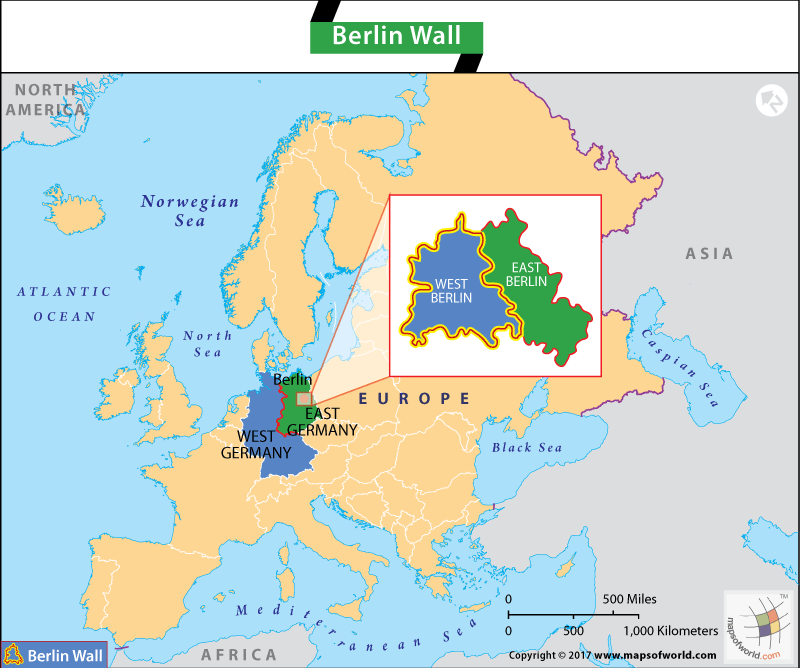Why was Berlin Wall built?
 The Berlin Wall was erected in 1961 by the government of German Democratic Republic (GDR) or East Germany, as it was commonly referred to by the west, to prevent its citizens from escaping to the Western side of Germany, what was Federal Republic of Germany (FRG) or commonly called West Germany.
The Berlin Wall was erected in 1961 by the government of German Democratic Republic (GDR) or East Germany, as it was commonly referred to by the west, to prevent its citizens from escaping to the Western side of Germany, what was Federal Republic of Germany (FRG) or commonly called West Germany.
The genesis of the wall goes back to 1945, in the closing phases of World War II, when the Soviet Red Army and the American-led allied forces raced to be the first to capture Berlin, the capital of Nazi Germany.
As the allies took over Berlin and rest of Germany, political-military tussle for control led to increased tension between the Soviet forces and US-led allies, that included Britain and France. Germany was divided into four occupation zones, each controlled by the USSR, the US, Britain and France. The same arrangement followed in the city of Berlin.
By 1948, USA, Britain and France decided to merge their territories to form a single entity called the Federal Republic of Germany and were keen to include the Soviet controlled territories as well. Russia strongly opposed the move and responded by launching a land blockade of West Berlin.
USA and Britain responded by ensuring adequate food and fuel supplies were brought in by air and kept their part of the city functional. The Soviets finally called off the blockade in 1949 but tensions continued between the two sides.
Meanwhile, East Germans in post war Germany were growing frustrated with poor economic conditions under the Communist regime and many began to move over to the western side, which was already on its way to economic recovery. Till 1961, over 2.5 million people were reported to have escaped to the Western side.
By now, the Cold War between USSR and the United States was at its peak and caught between the two was a divided Germany. On the night of August 12-13, 1961, the Soviet Premier Nikita Khrushchev ordered the East Germans to lay a barbed wire barrier cutting through Berlin. Although the movement of people reduced, it did not stop them from crossing over to the west.
On August 13, 1961, East Germany began to replace the barbed wire with concrete walls, starting with the Potsdamer Platz and Bernauer Strasse. This was to be known as the Berlin Wall. The wall was further fortified on the East German side with electric fencing and machine gun posts.
Despite the extensive barricades, over 5,000 people risked their lives to escape to West Germany through West Berlin. Some succeeded while most failed. Between 132 and 200 were reportedly killed by the East German security forces, during escape or post-capture.
By 1989, the Soviet Union was facing severe economic and political turmoil and began losing its grip over states like Poland and Hungary. During this period, people in East Germany grew more vocal against their government and began taking to the streets calling for the Berlin Wall to be removed.
On November 9, 1989, the GDR government finally gave in to people’s demands and allowed travel to the western side. People rushed over to the Berlin Wall and history has recorded those iconic moments of people climbing the wall and breaking it down. On October 3, 1990, Germany was reunified.
The process of taking down the wall began in 1990 and was completed in 1992.
Related Maps:





